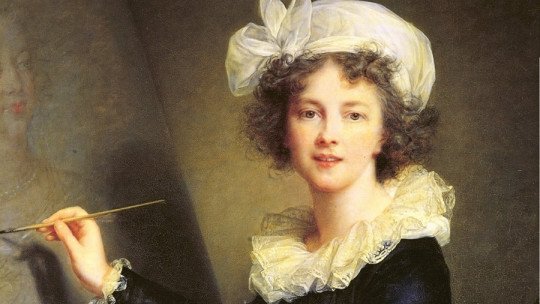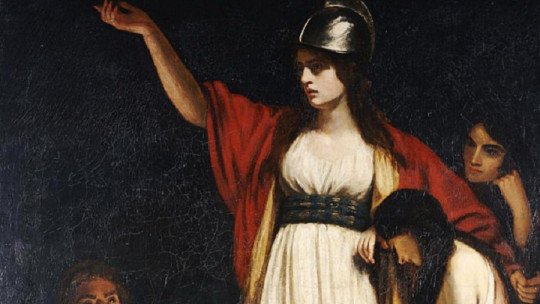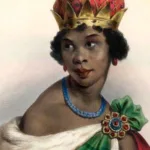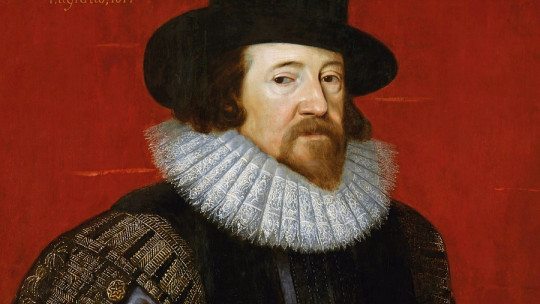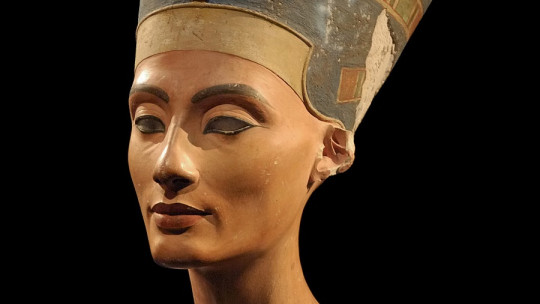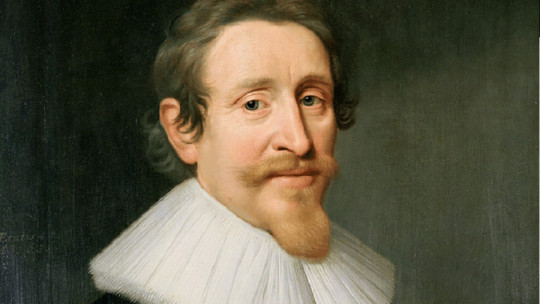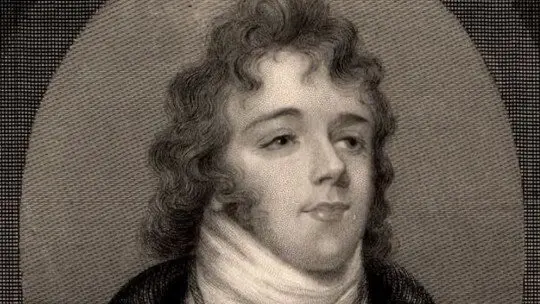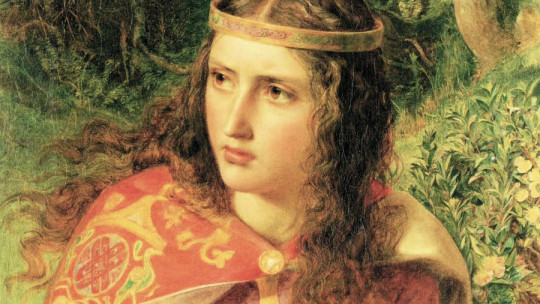
She was queen three times: first of France and England and, later, queen of troubadours. The latter was possibly the title that she liked the most about her. Because Eleanor of Aquitaine was not only one of the most powerful women of the Middle Ages, but she has also gone down in history as a faithful patron of the arts and protector of artists. Indeed; She gathered around her many of the most important troubadours of her century, who turned the court of England into one of the most cultured and refined in Europe. It was the century of courtly love, the Fin’amor that the poets sang.
In this biography of Eleanor of Aquitaine We will travel through the exciting life of an unparalleled woman, who knew how to impose her will in a man’s world and who deserves a prominent place in history.
Brief biography of Eleanor of Aquitaine
As is often the case with most of the relevant characters in history, Eleanor of Aquitaine has friends and enemies alike. For example, there are many who consider her an intriguing, problematic and usurping woman. Régine Pernoud (1909-1998), one of the best medievalists the 20th century has had and one of her best biographers, says in her prologue of Eleanor of Aquitaine (Cliff): “Annoying reputation, which I myself confess to having admitted in a previous work without taking the trouble to verify it. But having had the opportunity to get a little closer to the character, what often happens has happened (…): I have found a Leonor very different from the one I imagined. An unparalleled feminine personality that dominated a century (…)”.
In short: Eleanor of Aquitaine has been the victim, as is often the case, of historical misinterpretation. Let’s see below what her role was.
The first marriage, the first crown
Aquitaine was, in the year Eleanor was born, a rich and prosperous duchy west of what is now France In the 12th century, French territory was, of course, not as we know it today.
The domains of the king of France were incredibly small, as they broadly included the so-called Ille-de France, that is, Paris and its surroundings. The rest of the territory was a conglomerate of duchies, counties and lordships that were often more powerful than the monarch himself, as was indeed the case with the duchy of Aquitaine.
It is in these fertile lands where, around the year 1122 (the exact date could not be determined), Leonor was born At the time of his birth the duke was his father, William X, who was in turn the son of William IX, who has been considered the first troubadour in history. We then understand where the very young Leonor’s taste for poetry, music and love came from. And, really, Poitiers, the capital of Aquitaine, was the perfect setting to praise the sensitive and passionate character of the young woman, since she had a reputation for being the most refined and cultured court in all of Europe.
Leonor grew up, therefore, surrounded by luxury and beauty. According to her chronicles, she was a girl of splendid beauty, very cultured and intelligent, always interested in the arts and good conversation. She surely had no shortage of suitors, but her fate had been sealed for a long time: in 1137, at the age of 15, Leonor married the young Dauphin of France
The marriage pact was a masterful move; For France it meant annexing the rich Aquitaine territories, and for the duchy it meant gaining a faithful ally to protect Aquitaine from the independence attempts of the Gascons and the greed of the county of Anjou.
Paris is not Aquitaine
Unexpectedly, the French king dies, and Eleanor’s new husband is crowned Louis VII of France. Leonor thus obtains what would be her first crown. Now as monarchs, the very young couple leaves for Paris. But Eleanor soon realizes that the French court is not Aquitaine. Indeed, the Paris of the 12th century, despite being an active and dynamic city, is a mere provincial city compared to the land that Eleanor has left behind. The French court is not the Aquitaine court. And it’s not that Paris is not a cultured city; Suffice it to say that intellectual life bustles at the Sorbonne, and its streets are packed with students exchanging passion and knowledge.
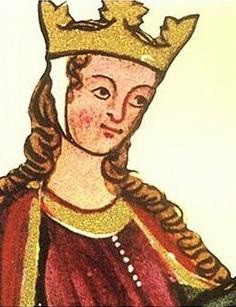
But in Paris there are no troubadours, there is hardly any music or poetry and, in the opinion of the young southern woman, the people are somewhat rough and somewhat unsociable. Her own husband, the king, is a quiet and very pious young man, who is not interested in art or luxury. Leonor withers in Paris Marital disagreements do not take long to appear; Disagreements that are aggravated by the fact that, in eight years of marriage, Leonor has only given the king one daughter. The lack of a male heir drives an even deeper gap in the couple’s relationship.
Towards the Holy Land
In 1144, the city of Edessa fell into the hands of the Turks The Christian kingdoms of the Holy Land, formed after the First Crusade, are therefore once again in danger. With the proclamation of a Second Crusade, Louis VII decided to travel to Jerusalem and, in May 1147, he left with his entourage to Constantinople. In that entourage travels the indomitable Leonor, who did not want to miss out on such an adventure. Her excitement overcomes her; finally a little excitement in her tedious existence.
Perhaps today it may surprise us that in the Middle Ages a woman traveled to the Holy Land with her husband, but the truth is that this was common. Already during the First Crusade there were many lords who took their wives with them and, later, King Saint Louis would also do so with his wife, Queen Margaret.
In Constantinople they are received with great pomp by the Byzantine emperor. Leonor is absolutely fascinated by the city, at that time the largest in the entire Christian world. The royal couple remained for many months in the Byzantine capital as guests of honor and, in March of the following year, They leave for Antioch, where Raimon de Poitiers, Eleanor’s uncle, rules
Raimon is only eight years older than his niece, and both share a complicity that soon arouses Luis’s jealousy. Malicious tongues, always ready to launch poison, spread the rumor throughout the city that Leonor gets into her uncle’s bed, which, by the way, has never been confirmed. Tension erupts when Raimon and Luis argue about how the Crusade should be carried out and Leonor sides with her relative. The dispute between the spouses is violent; Some historians maintain that Luis even hit his wife. Something that, obviously, the indomitable Leonor will never forget.
The marriage is void
The kings remain in the Holy Land for two years. Upon their return to France, Eleanor and Luis pass through the Italian peninsula and visit the Supreme Pontiff. Armed with courage and with a firm goal in mind, Leonor announces to the Pope that she believes her marriage is void. The cause: the degrees of kinship that unite him with Luis, which constitute a degree prohibited by the Church The Pope does not accept this statement, and even manages to get the couple to reconcile. The following year, Alix, the couple’s second daughter, was born.
However, the idea is still alive in the Aquitaine’s mind. Eleanor does not wish to remain with Louis any longer, and she uses again and again the argument of her kinship to obtain a marriage annulment, which she is finally granted in 1152. Free again, Eleanor returns to her beloved Aquitaine. .
Second marriage, second crown
Despite the duchess’s undeniably strong character, it was clear that she could not continue participating in the European political board without the presence of a man at her side. These were the rules of the game, and Leonor had to follow them.
It was very clear to her when, during her return trip to Aquitaine, she was on the verge of being kidnapped on two occasions. She was determined to have a male figure who would protect her in front of the gallery, Leonor married, just two months after the annulment of her first marriage, the Count of Anjou, the very young Enrique Plantagenet, who at that time was barely twenty years old (ten younger than her). Why did Leonor choose this little boy to become her second husband?
The county of Anjou had long had claims to Aquitaine, so, for the Plantagenet, the link was a masterful move.
But what about Leonor? It seems that the passionate duchess fell madly in love with the young man, who had a character as fiery as hers. Maybe she thought that if she had to remarry, if she had no choice, she would at least marry someone who was like her. She wanted to forget at all costs the “monk king,” as she once called her previous husband, the French king.
Henry Plantagenet was not always Count of Anjou. After the long English civil war that pitted the two candidates for the throne against each other, Henry took the crown, since he was the son of the supposed legitimate queen, Matilda. So, On December 19, 1154, Eleanor was anointed as queen of England
Queen of troubadours
Two crowns had already passed through her head, and a third was still missing, which, for Leonor, would be the most significant. People began to call her “queen of troubadours.”
Once in England, Eleanor realized that the island was even less refined than the court of Paris Immediately, she got to work. He invited troubadours, musicians, poets and writers, and created around him a lyrical universe that would be the symbol of courtly love or Fin’amoras it was called in the troubadours’ language of oc.
Eleanor’s presence in England introduced the Arthurian legends into poetry and chivalric literature, which in those years were transmitted orally in the British Isles. Thanks to the patronage of the queen and that of the intellectuals she called to her side, these legends materialized in novels, the famous medieval romances, which were a real sensation at the time and which had dedicated authors such as Chrétien de Troyes at their disposal. head.
The time of intrigue
The woman who had been labeled “infertile” gave the English monarch no less than eight children However, soon the marriage began to break down. If at first Leonor and Enrique were very in love, little by little they began to distance themselves, in part because Leonor became increasingly involved in the politics of the kingdom. The result: Eleanor was gradually displaced by Chancellor Thomas Becket, who was later named archbishop and, after his assassination, elevated to the altars.
No, Leonor did not like being kept away from political affairs. And she, much less, liked it when her husband slept with her. Beautiful Rosamund, with which, in addition, it was said that the king fell madly in love. This was possibly what motivated one of the darkest episodes in the life of this queen, the one that has contributed most to fueling her reputation as a traitor and intriguer. And it is that Leonor began to conspire against her husband in favor of Ricardo, his favorite son. The play didn’t go well for him, at least for now. Once her cake is discovered, Henry locks her up first in Chinon Castle and, later, in Salisbury Castle, where she will remain isolated for years. Finally, the king died on June 6, 1189, without having reconciled with either his wife or his children.
After learning of the death, Eleanor frees herself from confinement and leaves alongside her son Richard, who is finally crowned Richard I of England Leonor is 67 years old at that time, an advanced age for the time when women usually retired to meditate in a monastery. But we have already seen that Leonor is not like other women. She will continue to fight for several more years, and will even gather all her strength to save her son from captivity in Vienna, where he is taken prisoner upon returning from the Third Crusade.
The last years
Ricardo was Leonor’s favorite son. He never hid this preference. When the Third Crusade breaks out, the new king bravely answers the call. From the Holy Land only praise comes for the monarch, who already receives the nickname Lion heart for his bravery. The praise hid, however, the cruelties that the English king is known to have committed, such as the episode, recorded by Jacques Le Goff, in which he walked through Jerusalem with a necklace of Muslim heads around his neck.
Be that as it may, Ricardo’s fame precedes him. Upon returning from the Holy Land, Leopold of Austria takes him prisoner and demands a large ransom: no less than 150,000 silver marks How to get such a sum? Leonor doesn’t think twice. She goes from one place to another, she talks to the most influential people of the moment and manages to mobilize all the king’s vassals. When she finally raises the large sum, it is she herself, at seventy years old, who personally places it in the hands of Leopold’s envoys, who are waiting for her in Cologne.
His spirit is fireproof. Six years after her rescue, now almost 80 years old, he still has the strength to cross the Pyrenees and pick up her granddaughter Blanca in Castile, in order to marry her to the new king of France, Louis VIII. Leonor does not know it, but the teenager who accompanies her back will be her worthy successor and she will become another of the most energetic female figures of the Middle Ages. Like father Like Son.
Now 80 years old, Leonor finally decides to retire The chosen place is the monastery of Fontrevraud, where he died on April 1, 1204. Eight of his ten children have died, including his adored Richard. Only Leonor, queen of Castile, and Juan, his youngest son, remain alive, who will reign in England with the name of Juan sin Tierra. Years before, he had engaged in a frantic war for the throne against his brother Richard, and only Eleanor managed to bring peace between the two.

